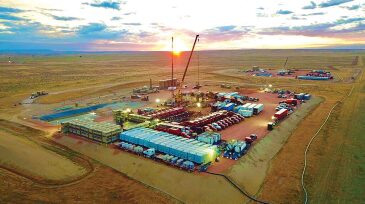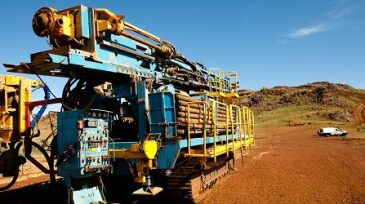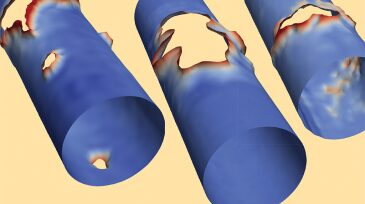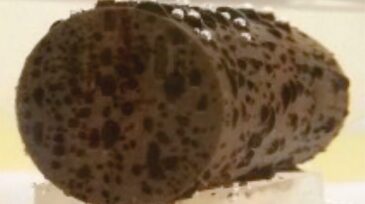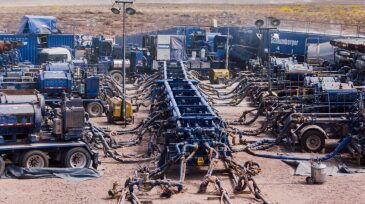Hydraulic Fracturing Content Feed
-
Groups of wells communicate, interfere, and hit each other. It is an unruly scene that can offer benefits. Three stories look at why competing fracture networks can add to the production from rock that might otherwise be missed.
-
The complete paper describes an experimental study performed to investigate the onset of liquid loading in a 6-in. production casing at various inclination angles.
-
New regulations have recently commenced with the effect that all onshore oil and gas exploration and production proposals involving hydraulic fracturing in Western Australia now will need to be referred to the Environmental Protection Authority for assessment.
-
When a plug gets stuck in a well, consider the cause. Often stuck fracturing tools are a warning sign of casing trouble. Companies that have investigated plug problems have been surprised by the findings.
-
The complete paper describes and quantifies the stress-dependence of compaction and permeability for anisotropic rock matrices, natural fractures, and hydraulic fractures, based on comprehensive rock tests of a fractured tight reservoir.
-
The complete paper presents a strategy for selecting a surfactant/solvent package for parent wells. Oil recovery and associated water saturation in the microfluidic-based device, with or without surfactant, are quantified and reveal that the oil recovery is enhanced with surfactant.
-
Bringing the Heat: Aramco Field Tests High-Temperature Chemistry To Slash Tight-Gas Completion CostsSaudi Aramco and university researchers are experimenting with a thermochemical fracturing fluid that aims to eliminate more than half of the pumping horsepower typically required to complete horizontal wells.
-
This article addresses a means to improve hydraulic fracturing operations by measuring the perforation effectiveness on a stage-by-stage basis before the hydraulic fracturing process begins.
-
Unconventional producers around the world have been hamstrung by expensive and cumbersome options when it comes to obtaining reservoir data. Among the latest ways to break past these barriers is a new method developed by Canadian researchers and field tested in Australia’s unconventional frontier.
-
Schlumberger is getting rid of its struggling OneStim business unit 2 years after an acquisition that doubled its size. It will get 37% of the shares of Liberty Oilfield Services, which said it will be the second-largest player in that sector.

